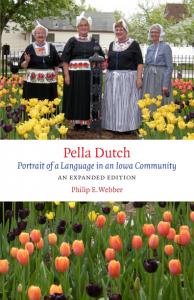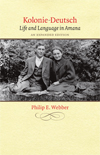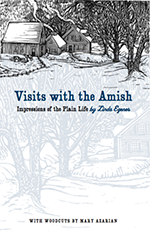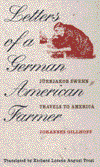Pella Dutch
Praise for the first edition
“An authoritative work . . . enormously enriched by the insights derived from personal involvement with the community. . . . It would be a loss . . . if this material, caught on the brink of its disappearance, were not to be preserved. [Pella Dutch is] a work of meticulous, informed scholarship . . . to be pounced upon as the rarity it is.”—Nancy C. Dorian, Bryn Mawr College
Founded in 1847 by religious separatists, the town of Pella in central Iowa is the state’s oldest Dutch American colony, and its crafts, architecture, and celebrations reflect and perpetuate the Dutch heritage of its earlier residents. Through his intriguing blend of sociolinguistic research, regional history, and interviews with current speakers of Pella Dutch, Philip Webber examines the town’s rich cultural and linguistic traditions.
Drawing upon formal and informal interviews and conversations with more than 150 speakers of Pella Dutch, Webber uses the methods of language research to trace the vestiges of Dutch heritage left on the English spoken by local residents; to explain attitudes toward language and ethnicity that emerged in the twentieth century; and to document the vocabulary, linguistic forms, humor, and conversational patterns that characterize contemporary Pella Dutch. In addition, desiring to let his informants speak for themselves, he includes the playful jokes, proverbial observations, folk wisdom, children’s rhymes, riddles, and puzzles influenced by Pella Dutch.
Webber’s introduction to this expanded paperback edition provides new photographs, updated information about recent research and publications, examples of how Dutch continues to be spoken, and descriptions of the ways in which Pella continues to commemorate its linguistic and cultural heritage. Linguists, anthropologists, and historians—as well as all those who enjoy Pella’s Tulip Time festival, its summertime fair or kermis, the Dutch letters in its bakeries, and the early winter visit of Sinterklaas—will appreciate Webber’s informed and engaging study of this unique Iowa community.






